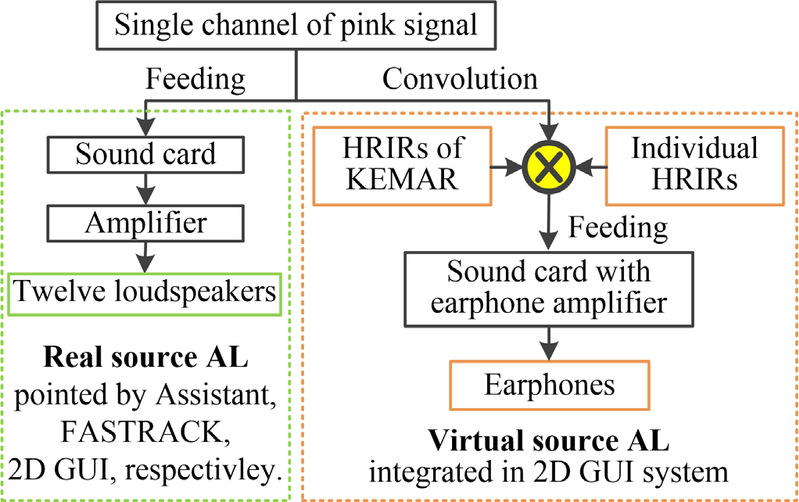Abstract—Auditory localization of spatial sound sources is an important life skill for human beings. For the practical application-oriented measurement of auditory localization ability, the preference is a compromise among (i) data accuracy, (ii) the maneuverability of collecting directions, and (iii) the cost of hardware and software. The graphical user interface (GUI)-based sound-localization experimental platform proposed here (i) is cheap, (ii) can be operated autonomously by the listener, (iii) can store results online, and (iv) supports real or virtual sound sources. To evaluate the accuracy of this method, by using 12 loudspeakers arranged in equal azimuthal intervals of 30° in the horizontal plane, three groups of azimuthal localization experiments are conducted in the horizontal plane with subjects with normal hearing. In these experiments, the azimuths are reported using (i) an assistant, (ii) a motion tracker, or (iii) the newly designed GUI-based method. All three groups of results show that the localization errors are mostly within 5–12°, which is consistent with previous results from different localization experiments. Finally, the stimulus of virtual sound sources is integrated into the GUI-based experimental platform. The results with the virtual sources suggest that using individualized head-related transfer functions can achieve better performance in spatial sound-source localization, which is consistent with previous conclusions and further validates the reliability of this experimental platform.


